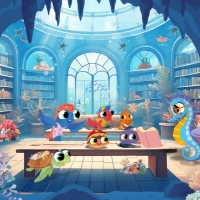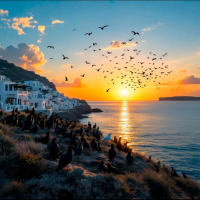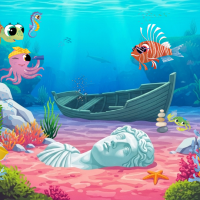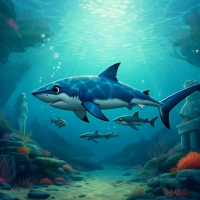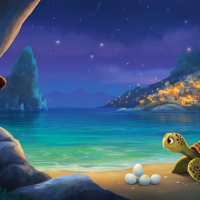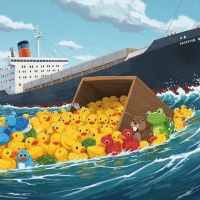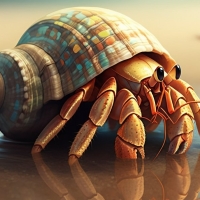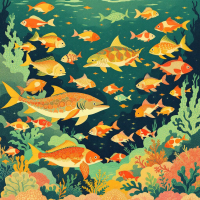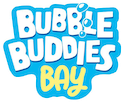
The Amazing World of Marine Life
- Sophia's Blog
- Hits: 333
The ocean is like a giant, magical world full of amazing creatures — from tiny plankton to massive blue whales! It’s bursting with life, colour, surprises, and stories waiting to be discovered. And guess what? I’m Sophia, your ocean buddy, and I’m proud to be part of this big blue adventure!
Tiny to Tremendous
Some ocean animals are so small you’d need a microscope to see them, while others are as long as a school bus, or even bigger!
Scientists have officially discovered about 242,000 different sea creatures. But… that’s just the beginning! Some experts think there might be up to 2 million species in total. That’s like opening the first few pages of a huge underwater library with millions of books still waiting to be read.
Each year, scientists discover around 2,300 marine species. But here’s the twist: sometimes it turns out the species already has a name, so the real number of truly new species is closer to 1,750.?
Why is Marine Life Important?
Marine life is important for many reasons:
- Oxygen Production: Many marine organisms, like phytoplankton, produce oxygen that we breathe.
- Food Source: Fish and other marine animals are a major food source for people around the world.
- Climate Regulation: Oceans help regulate the Earth's climate.
- Medicine: Many medicines are derived from marine organisms.
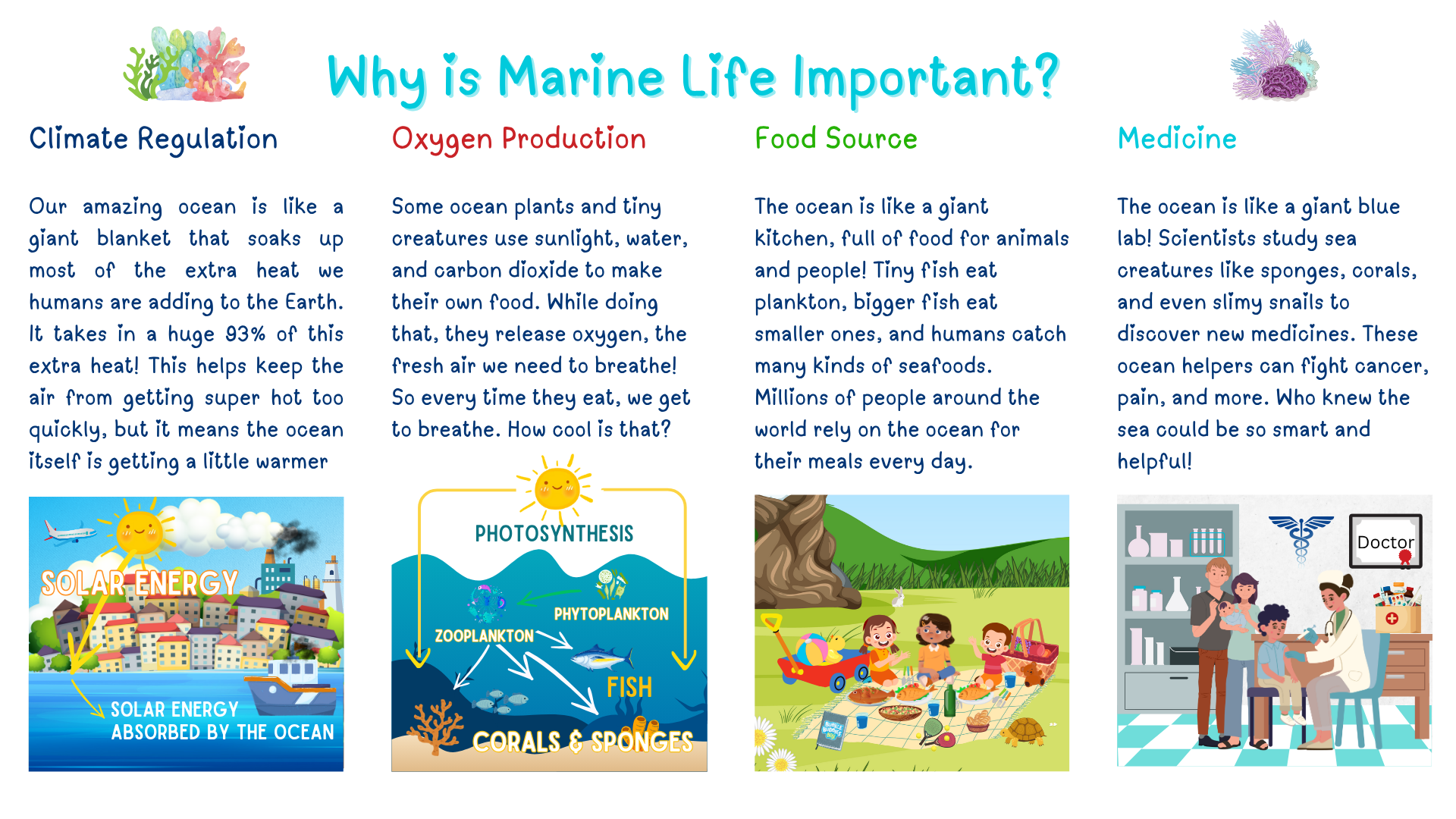
Meet the Ocean Animals
The ocean is home to some pretty amazing creatures, and guess what? Some kinds of animals can even belong to more than one group, but don't get confused, it just means they're extra special!
Fish - Bright, bold, and always on the move!
From bright clownfish to fierce sharks, the sea is full of fishy friends! Fish live in water, breathe through gills, and use fins to swim. They come in every shape and colour, from a Dwarf Goby (smaller than your fingernail!) to giant Sharks.
- Fish are a big part of the ocean food chain.
- Many people around the world eat fish to stay healthy.
- Some help clean coral reefs by nibbling on algae!
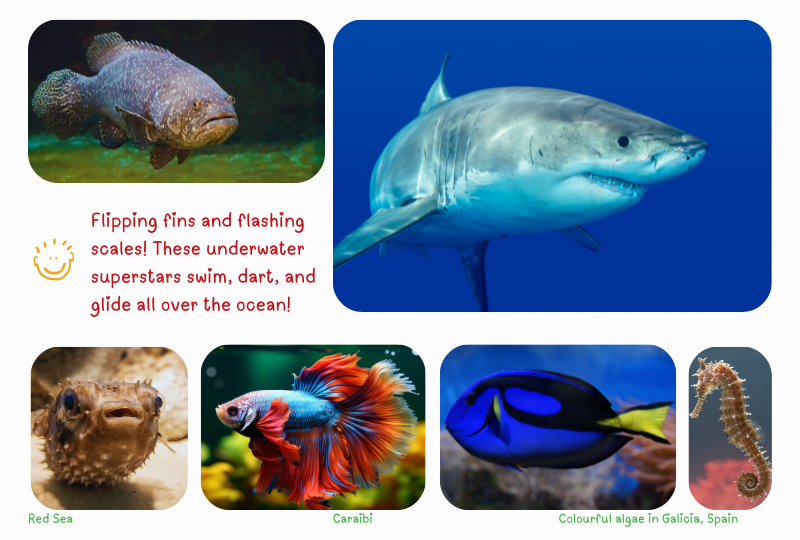
Mammals - Air-breathing ocean buddies
Ocean mammals like whales, dolphins, and seals breathe air and feed their babies milk, just like humans! Blue whales are the biggest animals on Earth, bigger than dinosaurs!
- They help keep ocean food chains balanced.
- Some, like whales, help fertilize ocean plants with their poo (seriously!).
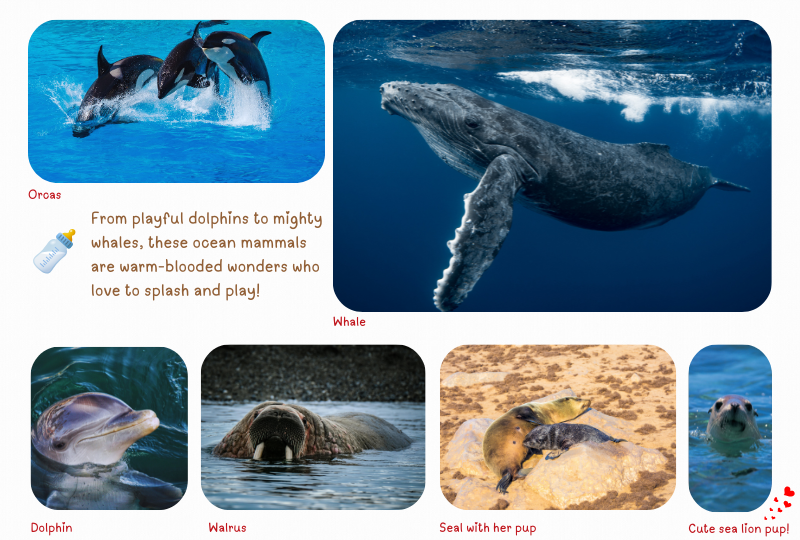
Reptiles - Egg-laying adventurers with flippers and fins!
Sea reptiles like turtles and snakes lay eggs on land but spend most of their lives swimming in the sea. Some sea turtles can hold their breath for hours while resting!
- They help control jellyfish and seagrass populations.
-
Some sea turtles carry tiny ocean hitchhikers on their shells, like algae, barnacles, and even little crabs!!
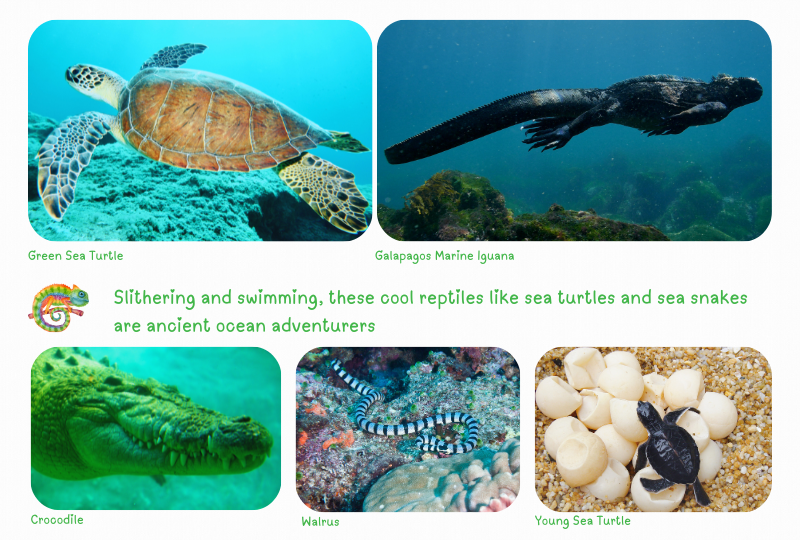
Invertebrates - No backbones, no problem
Invertebrates are animals without backbones, like crabs, lobsters, jellyfish, and shrimp. A jellyfish is about 95% water, and it glows in the dark!
- Many are cleaners, munching up leftover food.
- Others are food for bigger sea creatures.
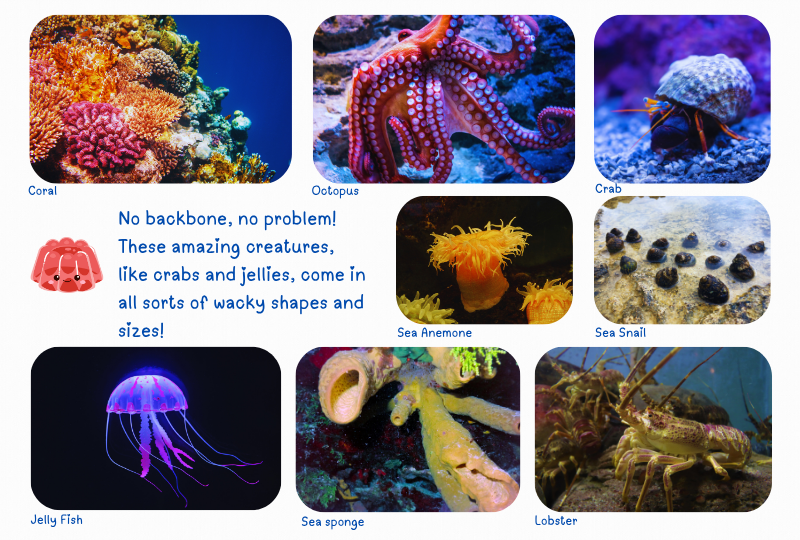
Cephalopods - Smart, squishy, and full of surprises!
Cephalopods are brainy ocean animals with tentacles, like octopuses, squids, and cuttlefish. Octopuses have three hearts and blue blood!
- They’re super smart and great hunters.
- They’re food for sharks, dolphins, and even humans!
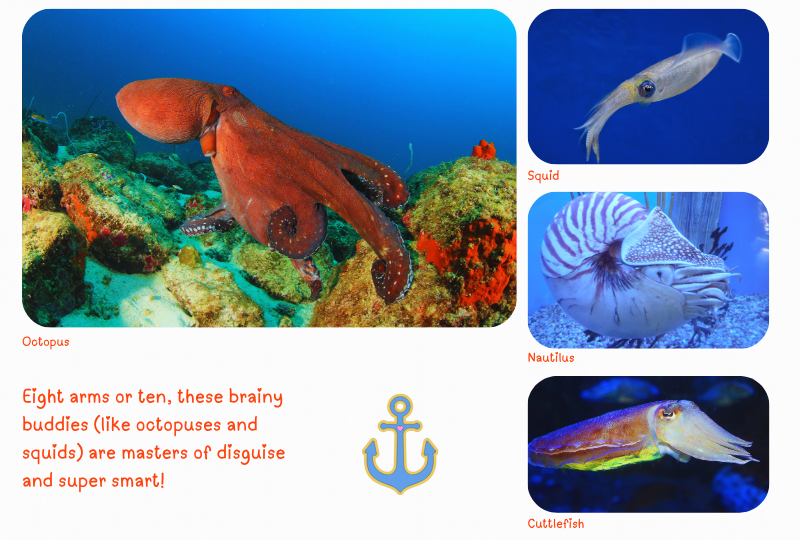
Echinoderms - Spiky Stars & Friends
These spiky-skinned animals include starfish, sea urchins, and sea cucumbers. Starfish can regrow arms, and some can grow a whole new body!
- They help clean up dead things on the seafloor.
- Some keep coral reefs healthy by eating algae.
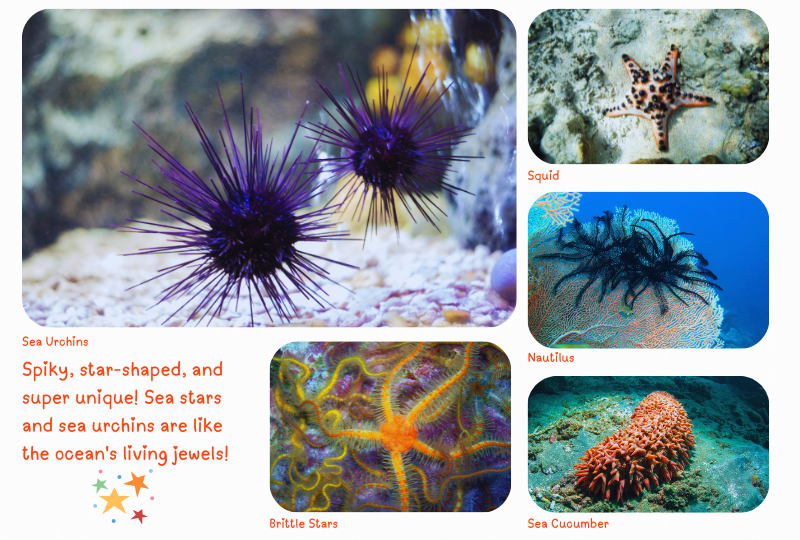
Cnidarians - Sting & Shine
These soft, squishy creatures have stingers! Jellyfish, coral, and anemones belong here. Some jellyfish glow in the dark, and some are older than dinosaurs!
- Coral reefs (made by corals) are home to tons of sea life.
- Jellyfish are food for sea turtles.
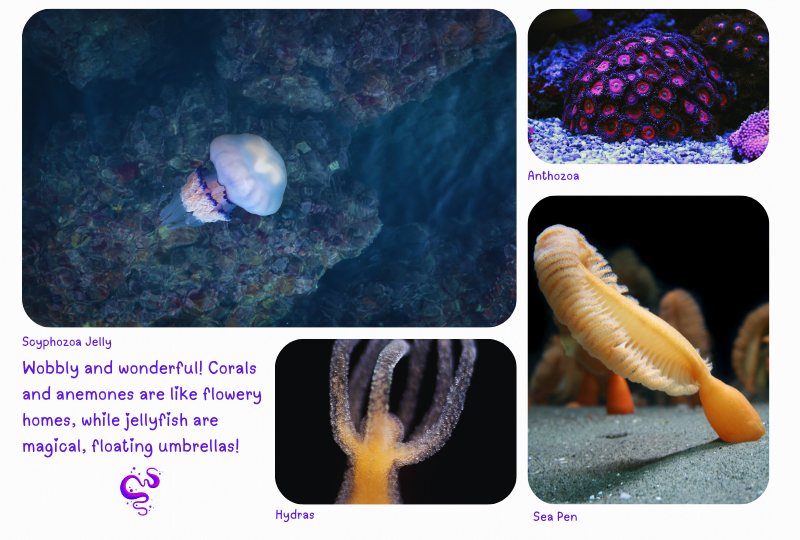
Sponges - the quiet cleaners of the ocean world!
Sponges are simple animals: they don’t move or chase prey that just sit on rocks, filter water, and chill! Some sea sponges can live for over 2,000 years!
- They clean the ocean like natural filters.
- Other sea animals live and hide inside them.
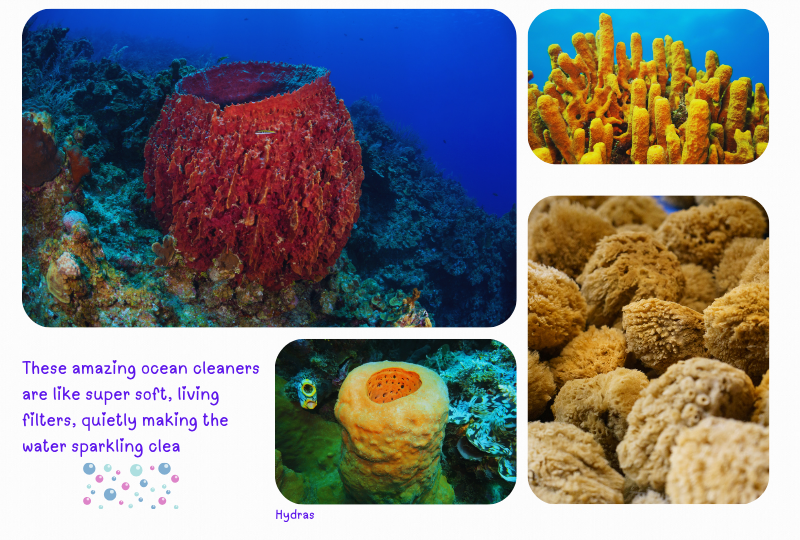
Marine Birds - feathery flyers who soar across the sea!
These birds spend much of their life at sea, like puffins, penguins, and albatrosses. Albatrosses can fly for hours without flapping their wings!
- They spread seeds and nutrients as they fly.
- Some dive deep to catch fish!
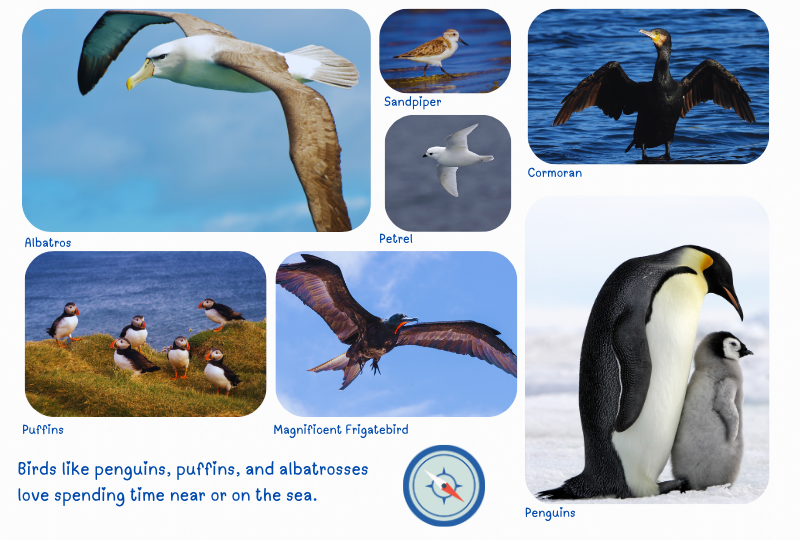
Underwater Plants That Keep the Ocean Alive!
Did you know the ocean has plants too? Just like forests on land, the sea has its own "plant world" that plays a HUGE role in keeping the ocean healthy and full of life:
- They give food and shelter to thousands of sea creatures.
- They help make the oxygen you breathe, in fact, every second breath you take comes from the ocean!!
- They help fight climate change by hiding carbon in their roots and leaves, like little leafy superheroes!
Let’s dive into the 3 main types:
Algae - The Ocean’s Colourful Floaters!
Algae are plant-like creatures that come in many shapes and colours; green, red, and brown! Some are teeny-tiny (you need a microscope!), and others, like kelp, are huge; the great kelp forests found underwater can grow up to 60 meters tall, that’s taller than a 10-story building!
- They float near the surface and soak up sunlight, making oxygen through photosynthesis (like trees do!).
- They feed small ocean animals like zooplankton and fish.
- Some even help build coral reefs!
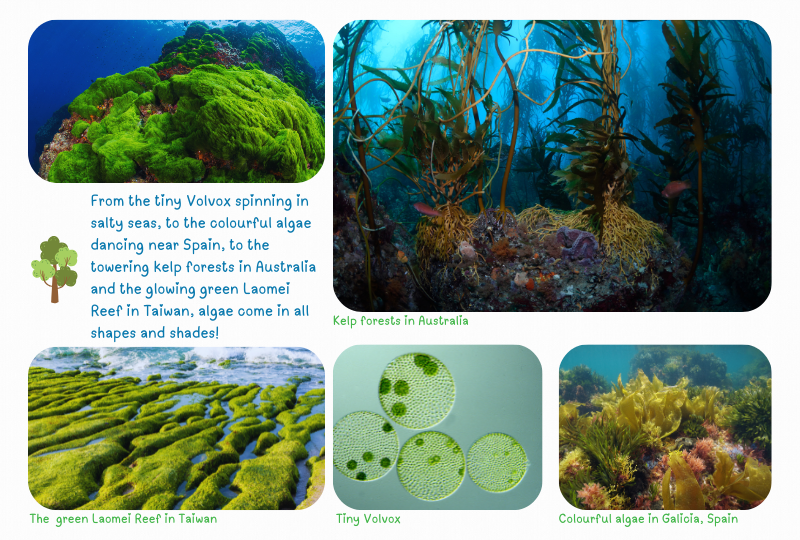
Sea Grasses - The Ocean’s Flowering Lawns!
Sea grasses are real plants (with roots, stems, and leaves!) that live fully underwater. They grow in big groups called seagrass meadows, like underwater fields!
- Tiny fish, sea turtles, and even seahorses love hiding and munching in seagrass beds.
- Their roots hold the sand in place, keeping the ocean floor nice and stable.
- They help clean the water and make oxygen too!
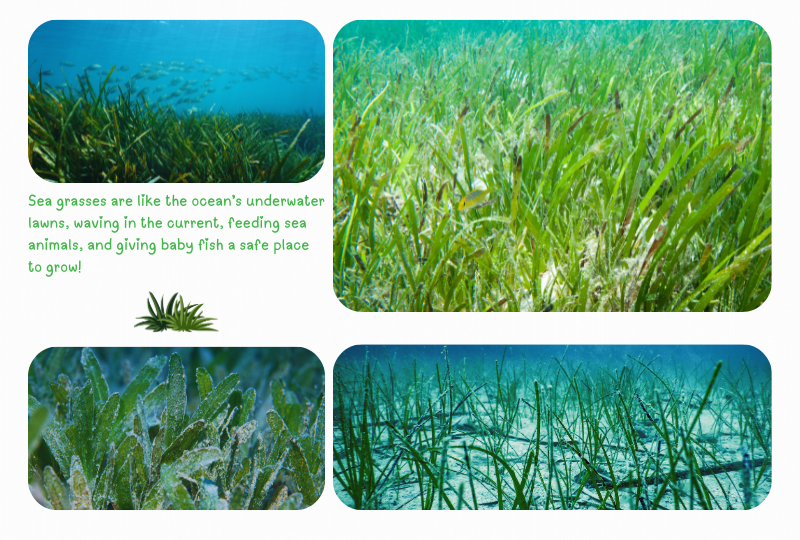
Mangroves - The Ocean’s Tree Guardians!
Mangroves are amazing trees that grow right on the edge of the sea in warm places. Their roots stick out of the water like twisty stilts!
- Baby fish, crabs, and shrimp use mangrove forests as nurseries where they grow up safely.
- The roots trap mud and stop waves from washing away the land.
- They help protect towns and beaches from big storms!
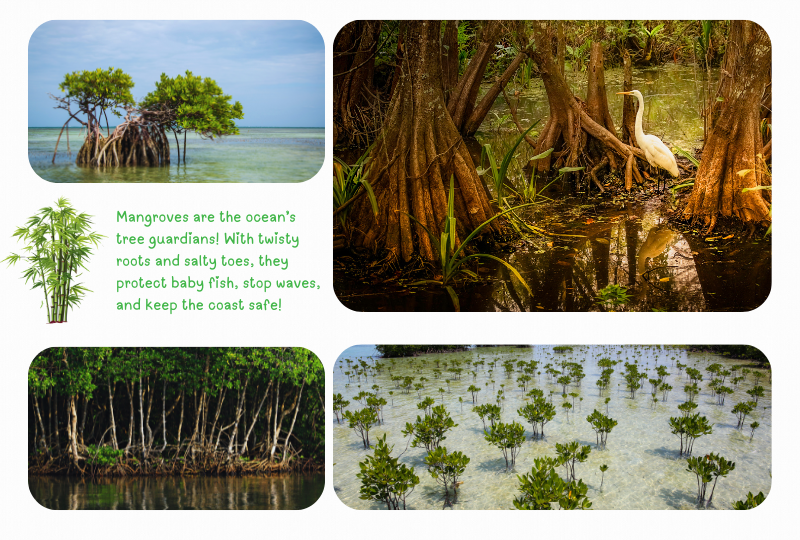
Ocean Bites: Who Eats What?
In the ocean, every creature plays a part in a big food chain, like nature’s menu! Tiny plants like phytoplankton are eaten by small animals, which are then eaten by bigger ones, all the way up to sharks and whales. This chain keeps the ocean balanced and healthy. Without it, everything would get out of whack!
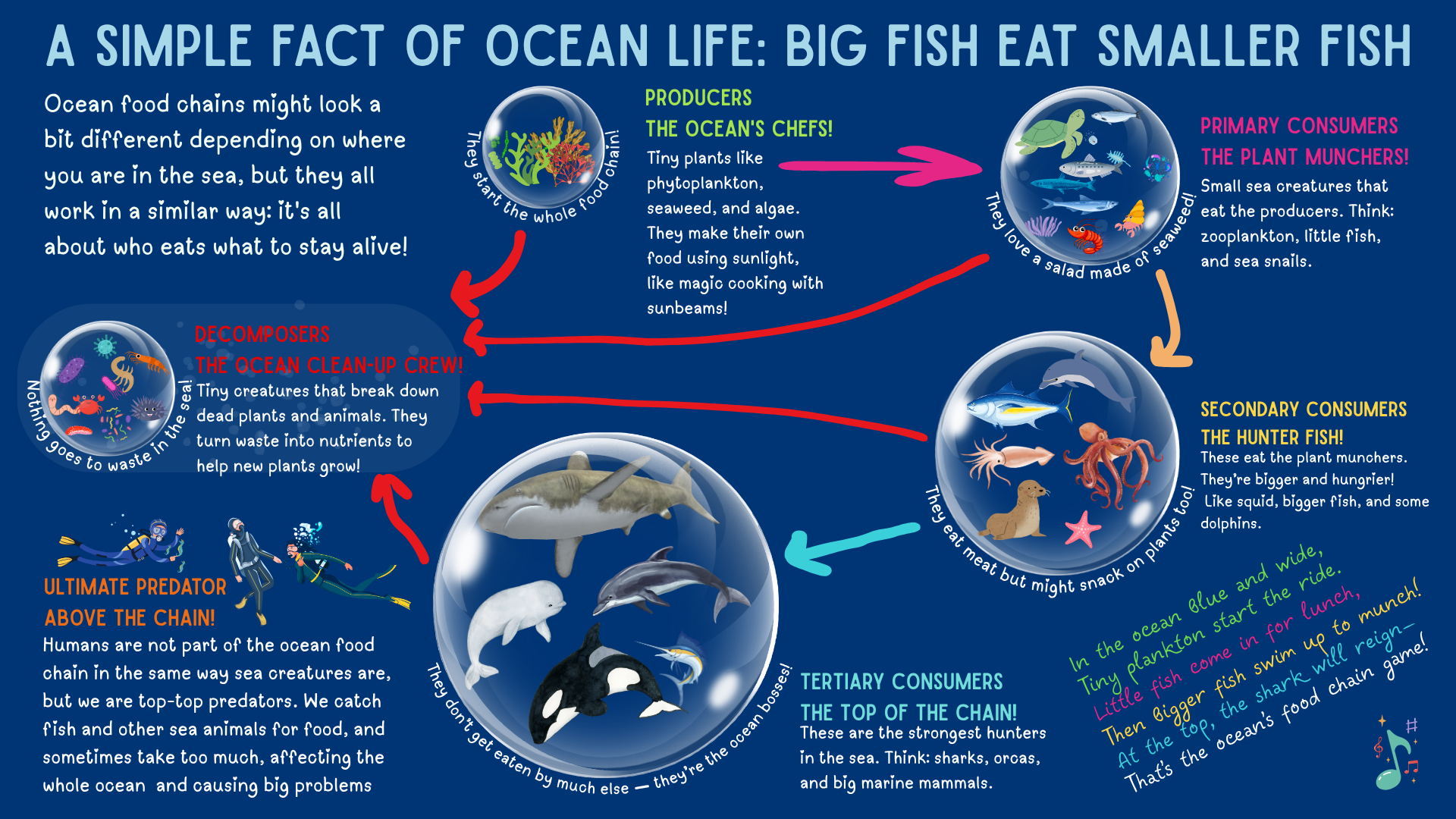
And that’s just a peek at the incredible families living in our ocean, Bubble Buddies! From the tiniest plants making the air we breathe, to the biggest whales splashing in the waves, every single creature, big or small, helps make our blue planet amazing. Keep exploring, keep wondering, and let's all be ocean heroes to protect this wonderful watery world!
Here are your activities!
🎨 Draw your own sea creature: Let your imagination run wild! Draw a creature that could live in the ocean, no matter how strange or wonderful.
🎨 Write a short story: Tell a story about a brave little fish who explores the ocean depths. What adventures does it have? What dangers does it face?
🎨 Make a diorama: Create a 3D scene of an underwater world. Use materials like cardboard, cotton balls, and blue tissue paper.
Learning Tasks:
🔍 Research a marine animal: Choose a marine animal you're interested in, like a dolphin, shark, or sea turtle. Research its habitat, diet, and behaviour.
🔍 Create a marine conservation poster: Design a poster to raise awareness about ocean pollution and overfishing. Include a catchy slogan and a picture.
Outdoor Activity:
🌿 Beach clean-up: Help protect marine life by participating in a beach clean-up. Collect rubbish and debris to keep the ocean clean.
Next time you're at the beach (or at a lake or a river) take a moment to appreciate the incredible diversity of marine life. And next time you see a fish or even seaweed, give it a smile, you’re part of its story too.
You’re now one flip closer to being a marine life whiz, well done!
Sophia the Seahorse

